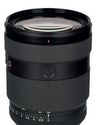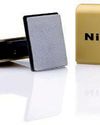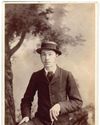In his 55-year career, Steve Schapiro has witnessed many key events in modern US history, and made some of the most enduring images of the civil rights movement. Steve Fairclough finds out more

Steve Schapiro picked up his first camera when he was nine years old. It was a 127 Kodak, and he was at summer camp. However, what influenced his career most was Henri Cartier-Bresson’s Decisive Moment. He explains, ‘I would go out and try to photograph that way – capturing the exact moment that was the height of action or emotion.’
From these beginnings, Steve went on to study with the legendary US photojournalist W Eugene Smith. He recalls, ‘I stayed with Eugene Smith in 1961 and he really taught you how to make prints in terms of getting intense blacks and intense whites. Sometimes he used up to 250 sheets of paper to make one master print.’
Printing wasn’t the only thing he mastered from working with Eugene Smith. ‘I also learned a feeling for humanity from him, as well as tricks of the trade – for example, a picture works best if there are two points of interest in it. So it won’t be just a portrait of someone – there will be something else that reveals more about them, and your eye will go back and forth between the two. It becomes a more satisfying experience and you stay with the photograph longer.’
Unsurprisingly, given his tutelage under a photographer such as Eugene Smith, Steve developed an ongoing interest in journalistic photography. He reveals, ‘As I was growing up, the most important magazine you could be a photographer for was Life. I did my own projects – I went to Arkansas on my own and did a story on migrant workers there.’ That story was picked up and published, without a fee, by a small Catholic magazine called Jubilee and subsequently The New York Times Magazine.
Esta historia es de la edición June 3,2017 de Amateur Photographer.
Comience su prueba gratuita de Magzter GOLD de 7 días para acceder a miles de historias premium seleccionadas y a más de 9,000 revistas y periódicos.
Ya eres suscriptor ? Conectar
Esta historia es de la edición June 3,2017 de Amateur Photographer.
Comience su prueba gratuita de Magzter GOLD de 7 días para acceder a miles de historias premium seleccionadas y a más de 9,000 revistas y periódicos.
Ya eres suscriptor? Conectar

Calling The Shots: A Queer History of Photography
Offering an unprecedented view of photographic history through a queer lens, this is a wonderful and powerful book, says

Large-aperture standard zoom, too
SONY has also revealed a new premium standard zoom, the FE 28-70mm F2 GM.

Super-fast, high-res Sony Alpha Ai II
SONY has announced its new professional full-frame flagship camera, the Alpha A1 II.

39 awesome accessories
Our round-up of the best accessories we've used and reviewed this year, along with some old favourites. There's something here for every budget, starting from just £7, including tripods, bags, filters and much more

Such a thing as society
This autumn sees the launch of a major new book and exhibition devoted to examining the multiplicities of photography during 1980s Britain. Peter Dench finds out more

Join Club
The sociable Canvey Island Photographic Club is keen to grow its in-person meet ups

Capturing flight
Winners and finalists of Bird Photographer of the Year share their tips for success with Hollie Latham Hucker

140 years of change
AP has become the world’s oldest surviving consumer photo magazine because we have moved with the times, says Nigel Atherton

Preserving history in platinum
A deep dive into the meticulous art of platinum printing, and the collaboration between the Royal Geographical Society and Salto Ulbeek. Mike Crawford explores how they brought historical photographs to life with enduring beauty and precision

Life in the past lane
What was life like for an amateur photographer in 1884? John Wade takes a trip back in time